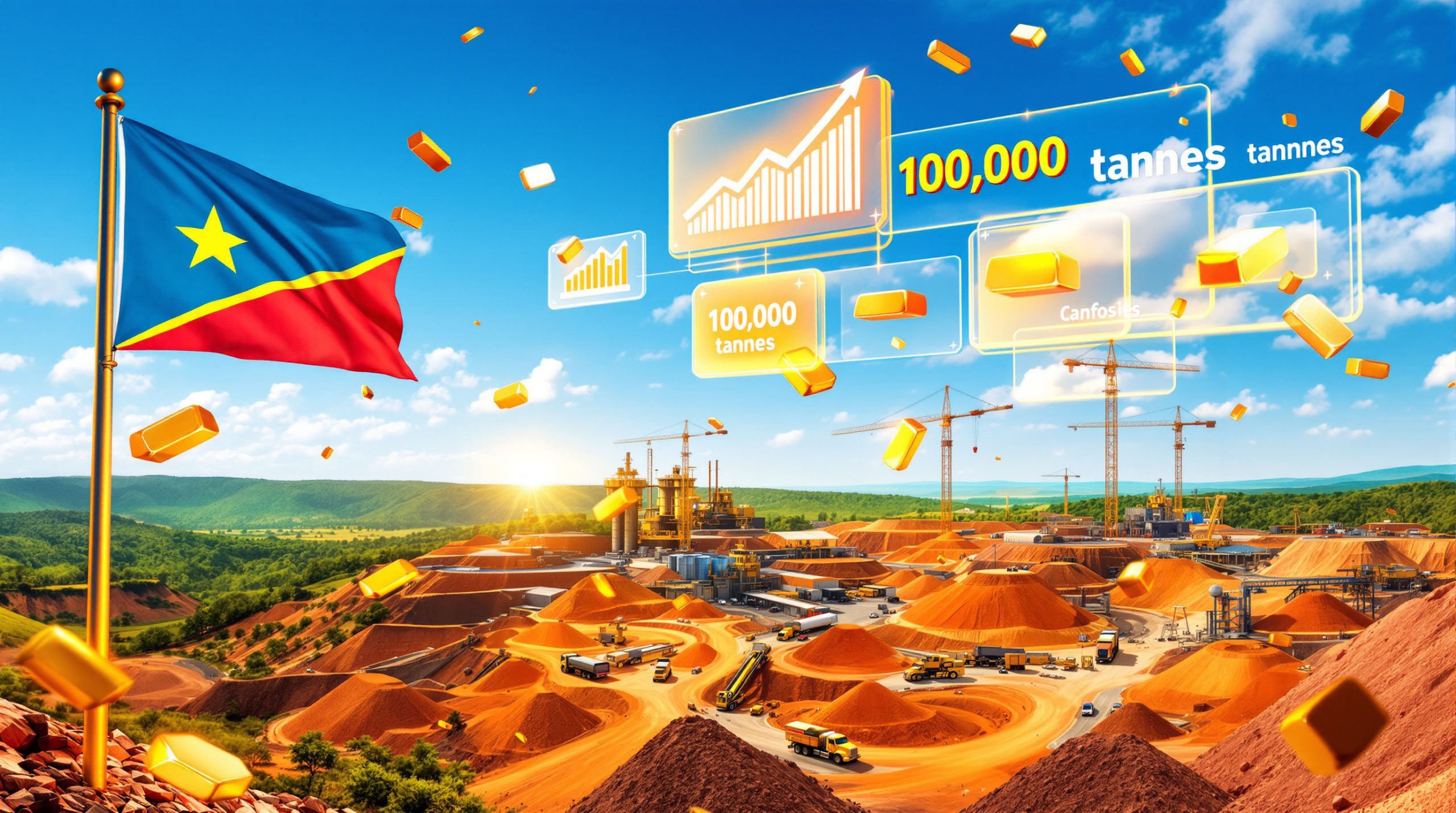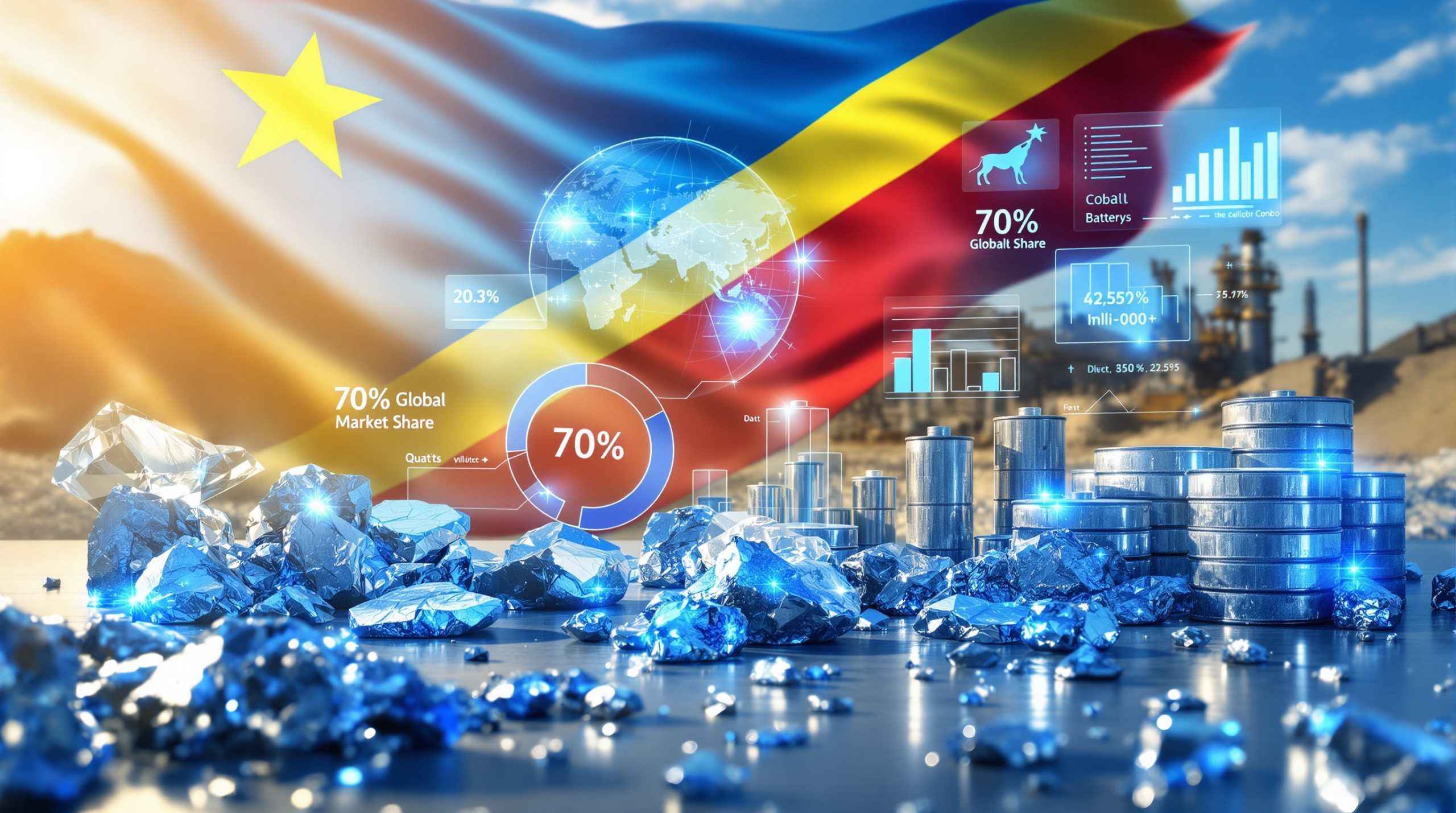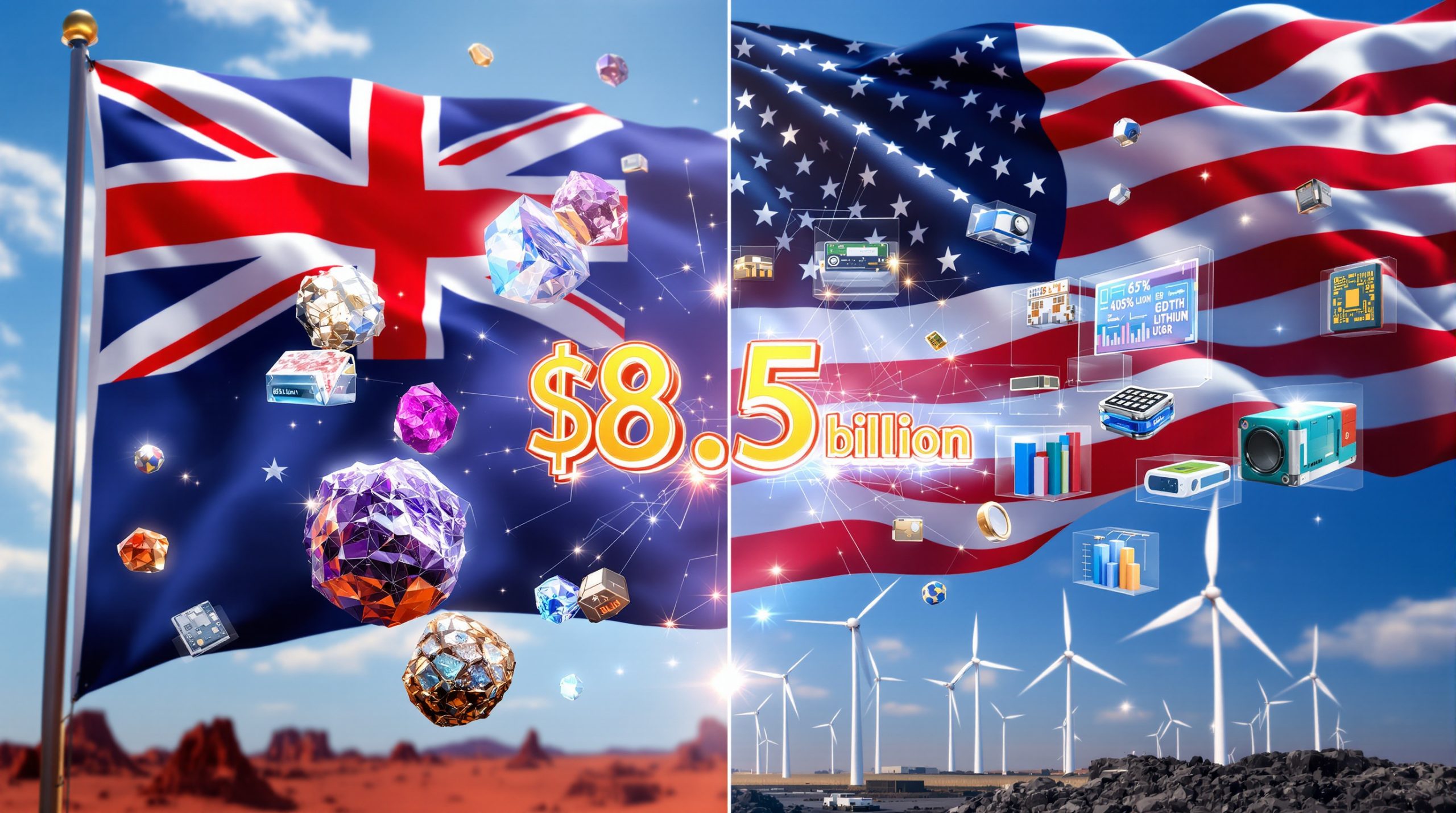Understanding the Geopolitical Tightrope for Australian Miners
Australia's mining sector finds itself navigating treacherous waters as the US-China trade war intensifies. With mining exports generating over $450 billion annually for the Australian economy, the stakes couldn't be higher. While iron ore and coal remain the industry's backbone, it's the growing critical minerals sector—currently valued at $7.6 billion—that finds itself at the center of geopolitical tensions.
China's strategic export bans on gallium, germanium, antimony, and graphite implemented in August 2025 have sent shockwaves through global supply chains. These China's export restrictions directly target America's high-tech manufacturing and defense capabilities, effectively weaponizing China's dominance in critical mineral processing.
"China is overtly utilizing export bans to disrupt U.S. defense capabilities, semiconductor manufacturing, and artificial intelligence development," notes Harvey Kaye, CEO of US Critical Minerals. "It's a calculated move in the broader economic conflict."
For Australian miners, this conflict creates both opportunity and uncertainty. As Professor Vlado Vivoda from the University of Queensland explains, "China's market dominance allows it to flood markets with cheaper products when threatened, as we've witnessed with Australia's nickel and lithium industries over the past year."
This market manipulation has already forced several Western Australian mines into care-and-maintenance status, with lithium prices plummeting to four-year lows in early 2025. The Ravensthorpe nickel operation stands as a stark example of how Chinese oversupply can devastate Australian mining projects almost overnight.
What Critical Minerals Are at the Center of the Trade War?
Key Minerals Under Chinese Export Restrictions
China's export restrictions strategically target minerals essential for advanced technologies:
-
Gallium: A crucial component in approximately 90% of LED screens worldwide, gallium is fundamental to semiconductor manufacturing, smartphones, and advanced display technologies.
-
Germanium: This rare element is irreplaceable in space technology, fiber-optic systems, and infrared optical applications. Its scarcity makes supply chain disruptions particularly problematic.
-
Antimony: Used extensively in ammunition production and various defense systems, antimony represents a direct attempt to impact American military capabilities.
-
Graphite: Electric vehicle batteries require between 50-100kg of graphite per vehicle, making this mineral essential to the green energy transition.
These restrictions are particularly effective because of China's dominance in processing. Despite not necessarily having the largest reserves, China controls approximately 80% of global processing capacity for many critical minerals.
Australia's Critical Mineral Resources
Australia possesses substantial reserves that position it as a potential alternative supplier:
- Second-largest global reserves of lithium, nickel, and cobalt
- Fourth-largest reserves of rare earth elements
- Substantial copper deposits strategically located across the continent
- Processing capability for approximately 50% of global lithium supply, despite recent market challenges
Lynas Corporation's Mt Weld mine in Western Australia supplies approximately 10% of global rare earth elements, highlighting Australia's capacity to be a significant player outside the Chinese supply chain.
"Australia's extensive reserves position it as a strategic alternative to China for many critical minerals," notes Professor Vivoda. "The challenge isn't resource availability—it's developing processing capabilities and protecting producers from market manipulation."
How Is the US Responding to China's Export Bans?
Trump Administration's Strategic Initiatives
The United States has implemented aggressive measures to counter China's dominance in critical minerals:
- Executive orders reducing mining approval timelines from 5 years to 12-14 months
- Activation of the Defense Production Act to prioritize critical mineral development
- Proposal of a $10 billion sovereign wealth fund specifically targeting critical mineral projects
- Fast-tracking development of specific mining companies like US Critical Minerals
These initiatives reflect growing recognition that critical minerals represent a national security concern, not merely an economic issue. The Thacker Pass lithium project exemplifies this approach, receiving expedited permits under Defense Production Act provisions.
US Interest in Australian Mining Partnerships
American financial institutions are actively courting Australian mining companies as potential partners:
- The Export-Import Bank (EXIM) of the United States has engaged in direct conversations with Australian processors
- Identification of Australia as a priority partner for critical mineral business relationships
- Defense-related procurement policies increasingly favor materials from allied nations
"The U.S. sees Australia as a priority partner for critical mineral processing projects," explains Harvey Kaye. "EXIM Bank discussions with Australian companies represent just the beginning of what could become a significant financial partnership aimed at creating China-independent supply chains."
American interest extends beyond raw materials to processing capabilities. Projects like Glencore's Murrin Murrin cobalt operation, which provides approximately 5% of global supply, have attracted particular attention from U.S. strategic planners.
What Opportunities Exist for Australian Mining Companies?
Filling Supply Chain Gaps
As the United States and other Western nations seek alternatives to Chinese suppliers, Australian miners can capitalize on several advantages:
- Established reputation for environmental and social governance compared to competitors
- Technical expertise in sustainable extraction of high-grade deposits
- Potential to expand domestic processing capabilities, particularly for lithium hydroxide
- Ability to export environmental management technologies to operations in developing nations
Australian companies can leverage these strengths to position themselves as reliable alternatives in newly forming supply chains. The current environment creates opportunities not just for resource extraction but for technology transfer and consulting services.
Benefiting from US Investment
The trade tensions have created tangible financial opportunities:
- Australian dollar depreciation (trading at approximately 0.65 USD in 2025) enhances export competitiveness
- Reduced regulatory barriers for projects deemed strategically important to allied nations
- Increased interest from American institutional investors seeking resource security
David Handel, Managing Director of RST Solutions, notes how these dynamics are already benefiting some firms: "The exchange rate differential has more than offset any tariff impacts for our U.S. contracts. We're seeing increased interest in our environmental technologies from American mining operations seeking to improve their ESG challenges in mining."
The expansion of lithium hydroxide plants in Western Australia, such as the Kemerton facility, demonstrates how Australian companies can move up the value chain while maintaining strong relationships with both Chinese and American customers.
What Challenges Do Australian Miners Face?
Market Manipulation Concerns
China's dominant position in mineral markets poses significant operational risks:
- Demonstrated willingness to flood markets with cheaper products to eliminate competition
- Approximately 60% of Western Australian lithium mines suspended operations in 2024 due to price pressures
- Chinese nickel oversupply reached approximately 200,000 tonnes in 2024, devastating global prices
- Tianqi Lithium's strategic positioning affecting output at the Greenbushes mine
Professor Vivoda highlights the fundamental challenge: "This isn't a free market in any meaningful sense. When one player can manipulate supply to such an extent, strategic intervention becomes necessary for the industry's survival."
Australian producers face production costs typically 15-20% higher than their Indonesian counterparts, making them particularly vulnerable to price manipulation strategies.
Balancing US and Chinese Relationships
Australian mining companies must navigate relationships with both superpowers:
"The diplomatic balancing act is perhaps the most difficult challenge. China remains our largest customer, while the United States represents our most crucial strategic ally. One misstep could have severe consequences for the entire sector." – Professor Vlado Vivoda
This precarious position requires careful strategy at both corporate and government levels. Previous tensions led to Chinese restrictions on Australian coal, barley, and wine exports—a situation the mining sector seeks to avoid repeating.
Recent improvements in Australia-China relations have reopened some markets, but vulnerability remains. Companies must diversify their customer base while maintaining productive relationships with Chinese buyers and processors.
How Is the Australian Government Supporting Critical Minerals?
Policy Initiatives and Support Mechanisms
The Australian government has implemented several measures to bolster the critical minerals sector:
- Tax incentives providing a 10% R&D rebate specifically for critical mineral projects
- Proposed establishment of a federal reserve with a $500 million budget (2025-26)
- Development of voluntary purchase agreements to guarantee demand for producers
- Creation of a national stockpile targeting 1,000 tonnes of lithium and 500 tonnes of cobalt
These initiatives aim to provide a buffer against market manipulation while encouraging domestic processing capability. The $200 million grant awarded to Lynas for rare earth processing in Kalgoorlie exemplifies this government support for critical minerals.
State governments have also contributed, with Western Australia's Critical Minerals Facilitation Office working to streamline approvals and coordinate infrastructure development for priority projects.
Industry Perspectives on Government Support
Views on the appropriate level of government intervention vary significantly:
-
Professor Vivoda advocates for strategic reserves: "Without stockpiles, producers remain completely vulnerable to market flooding tactics."
-
The Minerals Council of Australia expresses concerns about commercial viability: "Reserves must align with actual market demand rather than arbitrary targets," notes Cathryn Tilmouth, Chief Executive.
-
Industry leaders increasingly call for broader support including energy affordability reforms, streamlined environmental approvals, and labor market flexibility
The debate reflects a fundamental tension between free-market principles and the recognition that critical minerals operate in a market distorted by geopolitical investor strategies and state intervention.
How Are Australian Companies Adapting to the Trade War?
Case Study: RST Solutions
RST Solutions exemplifies how Australian companies are navigating the complex geopolitical landscape:
- Diversifying operations across multiple jurisdictions including China, Indonesia, and the United States
- Leveraging blockchain integration for supply chain transparency in Indonesian projects
- Focusing on environmental technologies that face less direct competition from Chinese alternatives
- Benefiting from USD-denominated contracts that have driven 15% year-over-year revenue growth
"We've developed a strategy that allows us to work productively with Chinese-owned operations in Indonesia while expanding our American presence," explains David Handel. "Environmental management technologies represent a niche where Australian expertise is globally recognized and sought after."
RST's collaboration with China's CMOC for Indonesian nickel processing demonstrates how companies can maintain productive relationships across geopolitical divides, focusing on environmental compliance areas where Chinese operations often seek Western expertise.
What Does the Future Hold for Australian Critical Minerals?
Growth Potential and Market Outlook
Despite current volatility, the sector shows significant promise:
- Projected critical mineral export growth to approximately $20 billion by 2030
- Increasing global demand driven by renewable energy transition and defense priorities
- Emerging opportunities in hydrogen reduction technology for green steel production
- Recovery signals in certain markets, with Pilbara Minerals' lithium auctions hitting $8,000 per tonne in recent months
The sector's long-term outlook remains positive despite short-term challenges. Australia's combination of resource abundance, technical expertise, and geopolitical positioning creates structural advantages that should outlast current market disruptions.
Strategic Considerations for Long-Term Success
For sustained growth, the sector must address several fundamental challenges:
"Domestic processing is key to capturing value-add opportunities. Australia cannot afford to remain primarily an exporter of raw materials if we want to maximize the economic benefits of our critical mineral reserves." – Professor Vlado Vivoda
Additional strategic considerations include:
- Developing strategies to manage the impact of EU carbon tariffs on Australian exports
- Exploring new frontier opportunities such as seabed mining in partnership with Pacific nations
- Establishing resource security arrangements with allied nations beyond traditional export relationships
- Balancing environmental sustainability with economic competitiveness in a carbon-constrained world
The proposed exploration of bilateral resource security treaties with the United States and European Union represents a potential evolution beyond traditional market relationships toward more strategic partnerships.
FAQs About Australian Mining and the US-China Trade War
How significant is China to Australia's mining industry?
China remains Australia's largest market for resources, accounting for approximately 42% of total mining exports. While critical minerals represent a relatively small portion ($7.6 billion) of Australia's $450 billion mining export sector, China's role as both customer and competitor makes it a crucial factor in the industry's future.
Can Australia replace China as a processor of critical minerals?
Australia has demonstrated processing capabilities, particularly in lithium where it handles approximately 50% of global supply. However, developing competitive processing infrastructure across the full spectrum of critical minerals requires significant investment, government support, and time to establish. Cost differentials of 15-20% compared to Asian processors remain a challenge.
What makes critical minerals "critical"?
Critical minerals are essential for advanced technologies, renewable energy systems, and defense applications with limited substitutes. Their supply chains are often concentrated, creating strategic vulnerabilities. For example, gallium is used in approximately 90% of LED screens worldwide, while electric vehicles require 50-100kg of graphite per battery.
How has the US-China trade war affected mineral prices?
The trade tensions have contributed to significant price volatility. Lithium prices fell to four-year lows in early 2025 partly due to Chinese market manipulation, while strategic stockpiling has supported prices for minerals like germanium and antimony. Nickel experienced price drops of approximately 30% in 2024 due to Indonesian oversupply backed by Chinese investment.
What environmental advantages do Australian miners offer?
Australian mining companies operate under ISO 14001 environmental standards and strict regulatory oversight, creating significant ESG advantages compared to operations in less regulated jurisdictions. This has created export opportunities for environmental technologies and consulting services, particularly for nickel and copper operations in Indonesia and South America.
Disclaimer: This article contains forward-looking statements regarding mineral prices, geopolitical developments, and market trends. These predictions involve inherent risks and uncertainties, and actual outcomes may differ materially from those anticipated. Readers should not make investment decisions based solely on the projections presented.
Ready to Track the Next Major Mineral Discovery?
Stay ahead of the ASX market with Discovery Alert's proprietary Discovery IQ model, delivering instant notifications when significant mineral discoveries are announced. Visit our discoveries page to see how previous mineral discoveries have generated substantial returns and start your 30-day free trial today.




